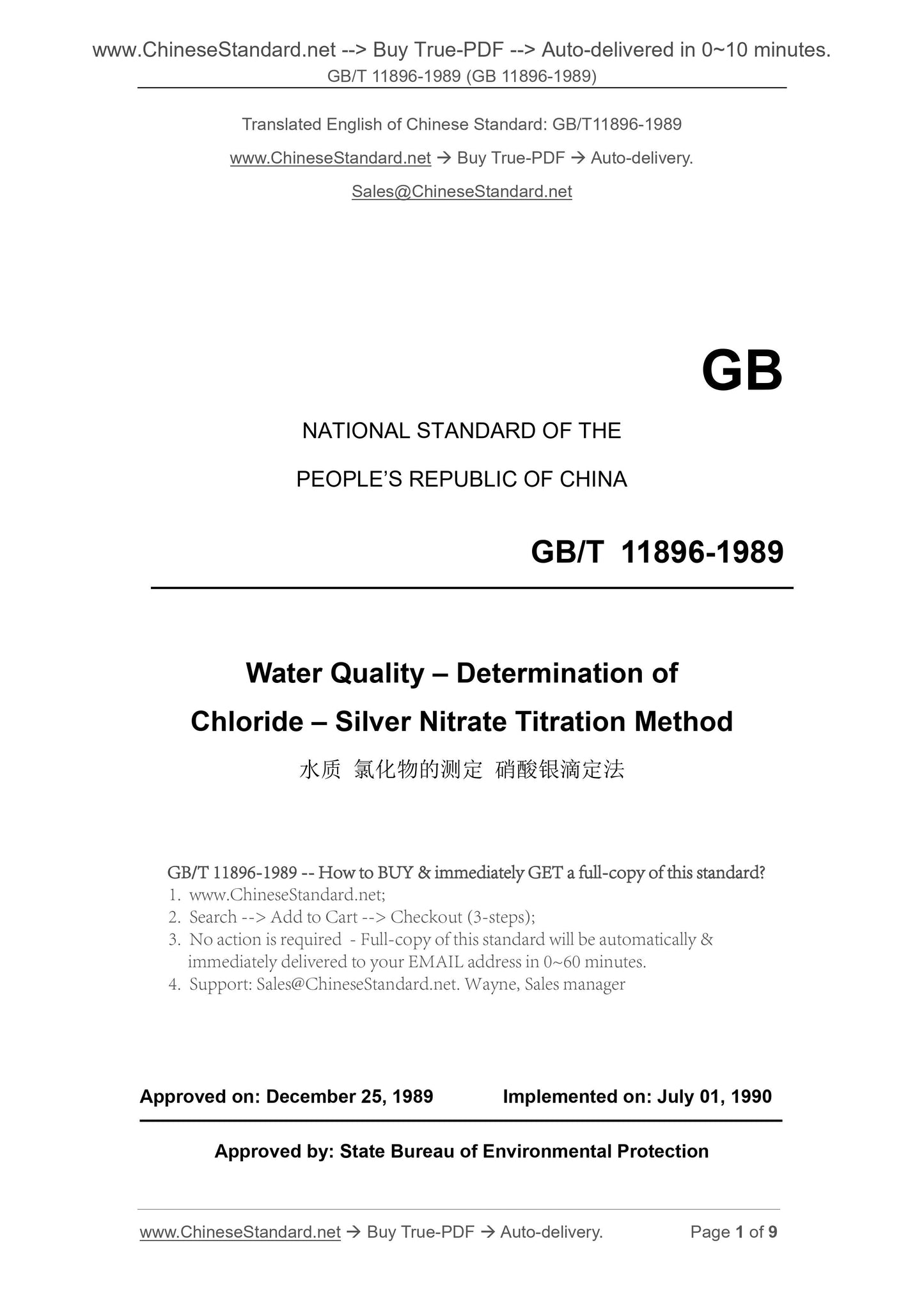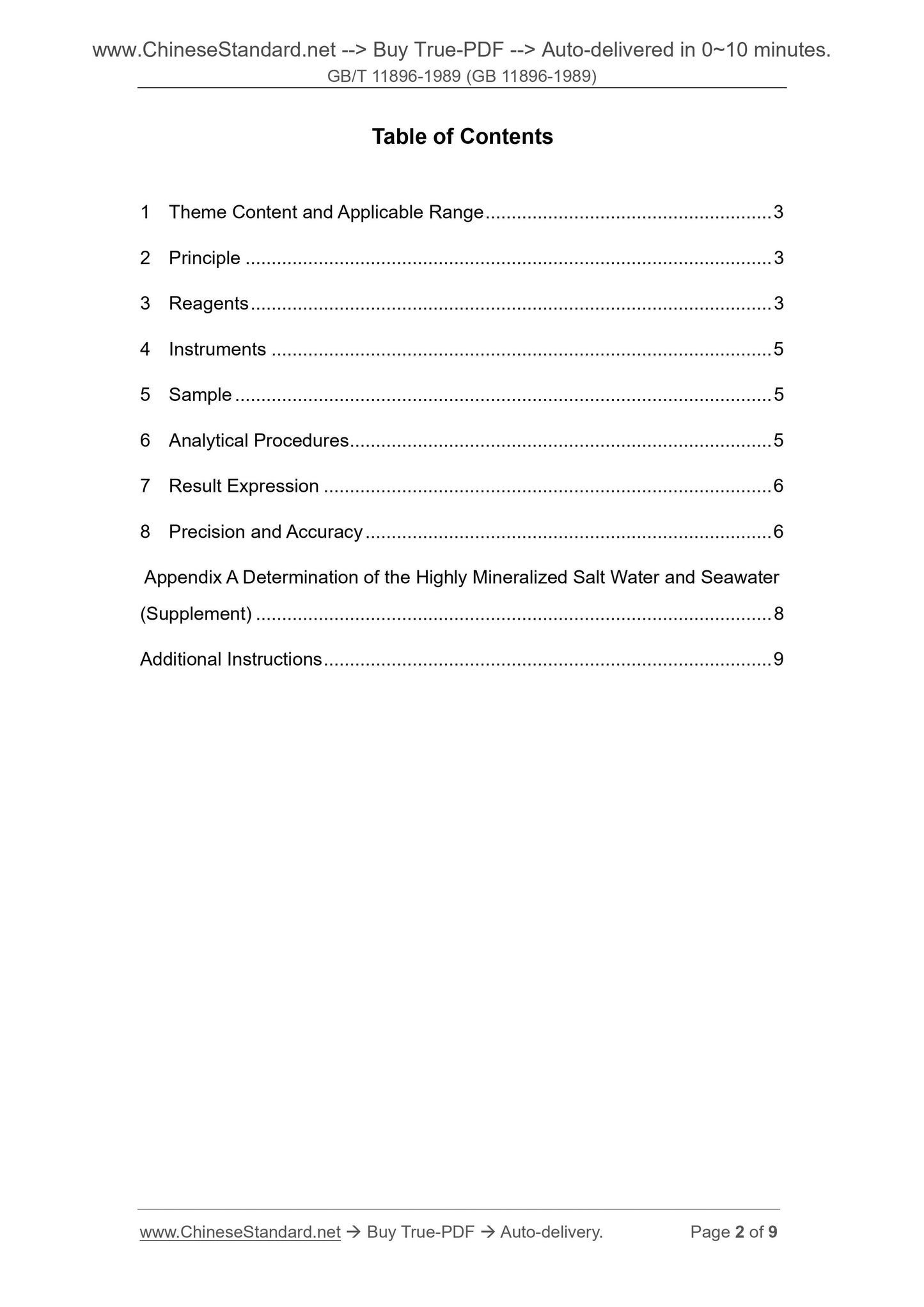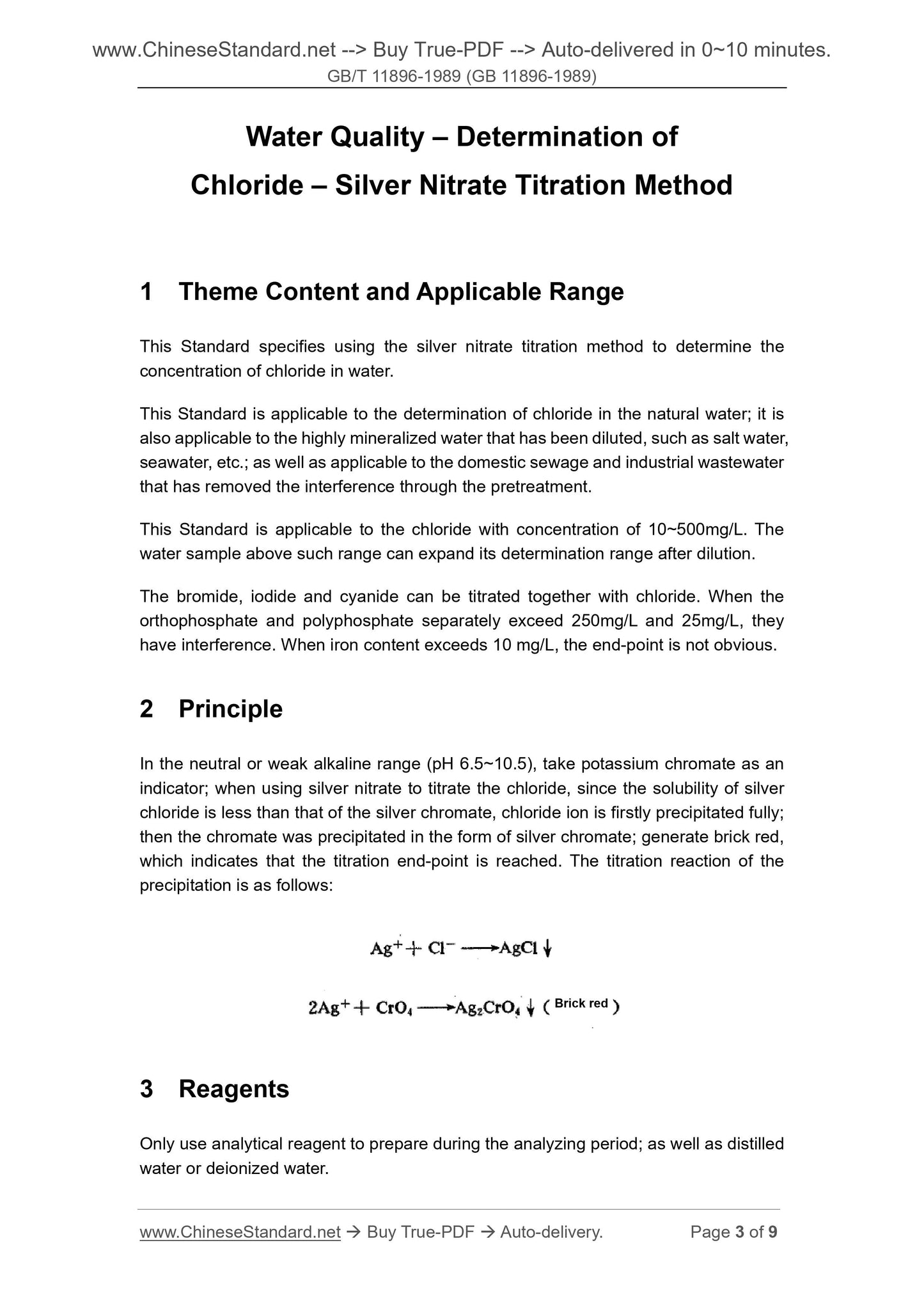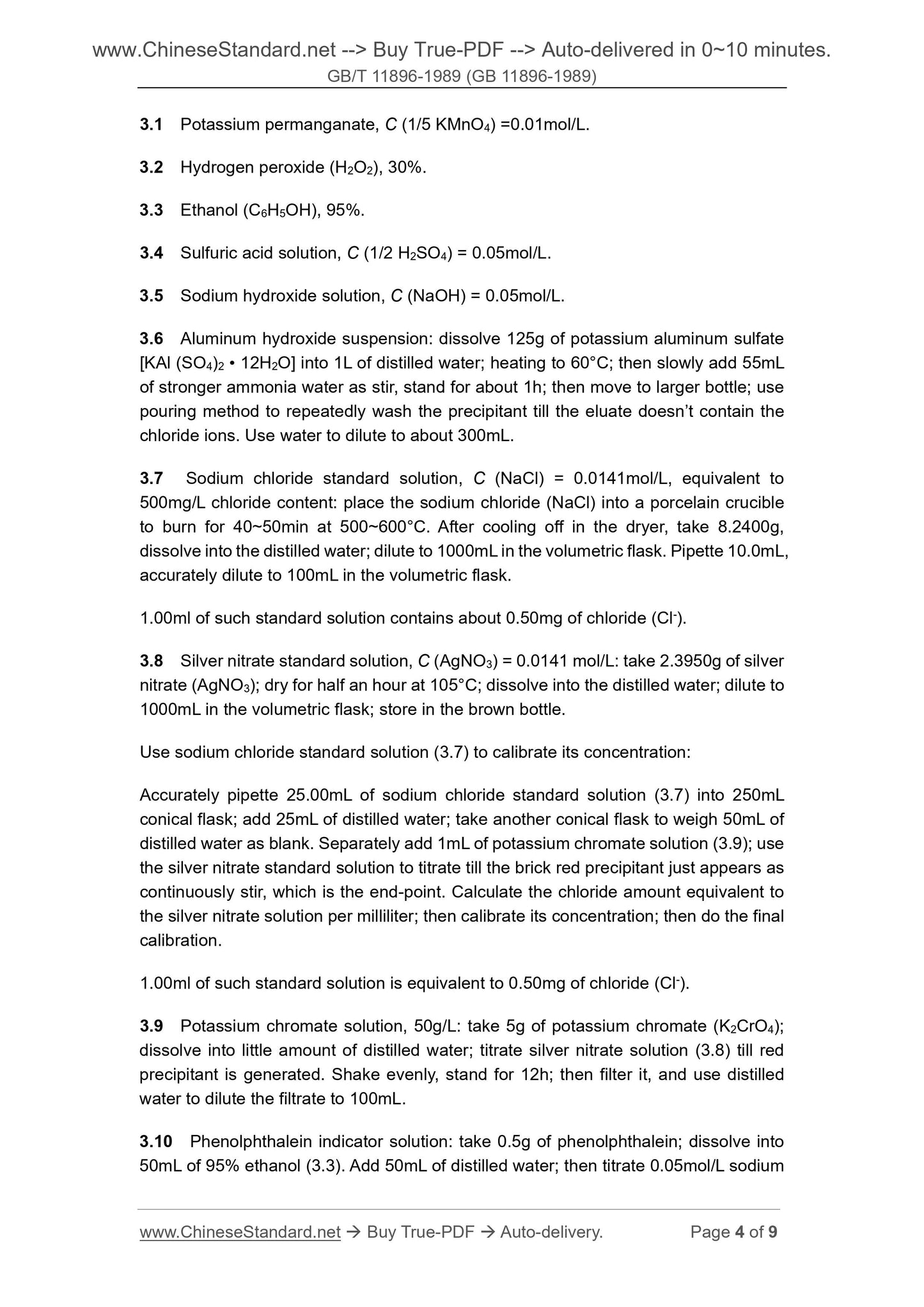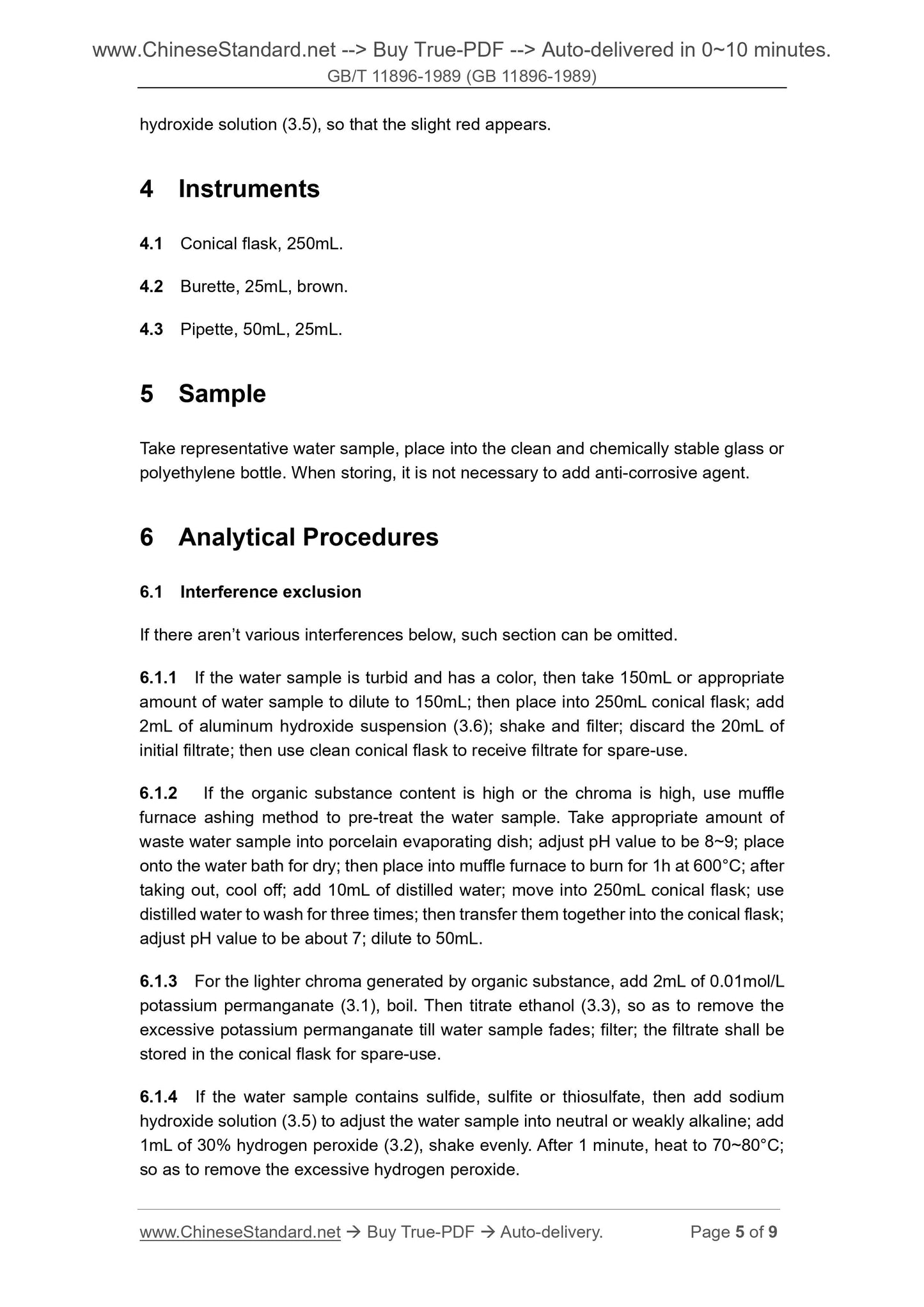1
/
of
5
www.ChineseStandard.us -- Field Test Asia Pte. Ltd.
GB/T 11896-1989 English PDF (GB/T11896-1989)
GB/T 11896-1989 English PDF (GB/T11896-1989)
Regular price
$90.00
Regular price
Sale price
$90.00
Unit price
/
per
Shipping calculated at checkout.
Couldn't load pickup availability
GB/T 11896-1989: [GB 11896-1989] Water quality. Determination of chloride. Silver nitrate titration method
Delivery: 9 seconds. Download (and Email) true-PDF + Invoice.Get Quotation: Click GB/T 11896-1989 (Self-service in 1-minute)
Newer / historical versions: GB/T 11896-1989
Preview True-PDF
Scope
This Standard specifies using the silver nitrate titration method to determine theconcentration of chloride in water.
This Standard is applicable to the determination of chloride in the natural water; it is
also applicable to the highly mineralized water that has been diluted, such as salt water,
seawater, etc.; as well as applicable to the domestic sewage and industrial wastewater
that has removed the interference through the pretreatment.
This Standard is applicable to the chloride with concentration of 10~500mg/L. The
water sample above such range can expand its determination range after dilution.
The bromide, iodide and cyanide can be titrated together with chloride. When the
orthophosphate and polyphosphate separately exceed 250mg/L and 25mg/L, they
have interference. When iron content exceeds 10 mg/L, the end-point is not obvious.
Basic Data
| Standard ID | GB/T 11896-1989 (GB/T11896-1989) |
| Description (Translated English) | [GB 11896-1989] Water quality. Determination of chloride. Silver nitrate titration method |
| Sector / Industry | National Standard (Recommended) |
| Classification of Chinese Standard | Z16 |
| Classification of International Standard | 13.060.01 |
| Word Count Estimation | 5,530 |
| Date of Issue | 11/3/1989 |
| Date of Implementation | 7/1/1990 |
| Issuing agency(ies) | State Bureau of Technical Supervision |
| Summary | This standard specifies the chloride concentration in water of silver nitrate titration method. This standard applies to the determination of chloride in natural water, but also to go through the proper dilution of high salinity water, such as brackish water, sea water, as well as pre-treated to remove interferences sewage or industrial waste. This standard applies to the concentration range of 10 ~ 500mg/L of chloride. After the measurement range can expand its range of water samples above this dilution. |
Share
